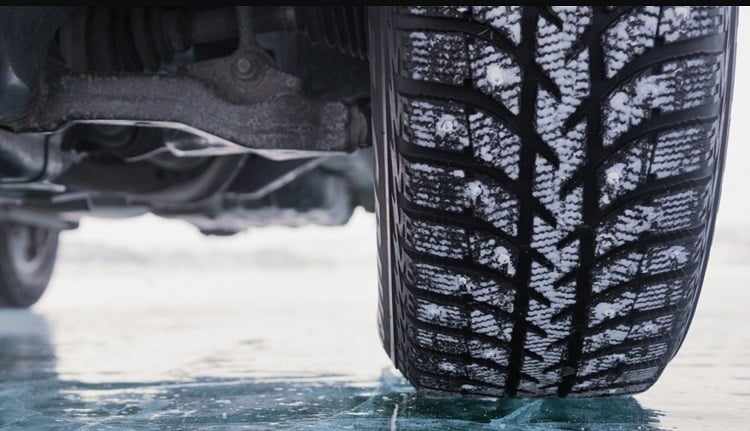Driving in the UK means dealing with rain — often a lot of it. From sudden downpours in summer to endless drizzle through winter, wet roads are part of everyday life for British motorists. While modern cars are equipped with advanced safety systems like ABS and traction control, your tyres remain the only part of the vehicle that actually touches the road. Choosing the right tyres for wet conditions can make a huge difference to your safety, handling, and peace of mind behind the wheel. Understanding what makes some tyres better than others in the rain helps you make confident decisions when it’s time for a replacement.
Why Wet Weather Tyres Matter in the UK
The UK’s unpredictable climate creates driving conditions that are often damp, slippery, and challenging. Rainwater on the road reduces friction between the tyres and the surface, increasing stopping distances and the risk of losing control. Even a thin layer of water can lead to aquaplaning, where the tyres skim over the surface rather than gripping it. The right tyres are designed to combat these conditions by channelling water away from the tread and maintaining as much contact as possible with the road.
Wet-weather performance is not just about grip; it’s about control. Tyres that perform well in the rain give drivers better steering response, shorter braking distances, and improved stability when cornering. In the UK, where rainfall is frequent year-round, it makes sense to invest in tyres that can handle wet roads confidently rather than compromising safety for price alone.
Understanding Tyre Design for Wet Conditions
Tyres are designed with specific tread patterns and rubber compounds to handle different driving environments. For wet conditions, two main factors determine how effective a tyre is: tread design and rubber composition. Tread design refers to the pattern of grooves and channels cut into the tyre’s surface. In wet conditions, these grooves act like drainage channels, dispersing water away from the tyre’s contact patch. Deeper grooves and directional tread patterns are particularly effective for this because they push water to the sides as the wheel rotates.
The rubber compound used in wet-weather tyres is equally important. Softer compounds maintain flexibility in cooler temperatures, allowing the tread to conform to the surface of the road and maintain grip even when it’s slippery. Harder rubber can lose traction as it stiffens in cold or wet weather, so tyres made with silica-enhanced compounds tend to perform better in the UK climate.
The combination of a clever tread design and the right rubber mix determines how safely and effectively a tyre can stop, steer, and grip in wet weather.
All-Season vs Summer and Winter Tyres
When choosing tyres for wet conditions, many drivers face a choice between all-season tyres, summer tyres, and winter tyres. Each type has its advantages depending on where and how you drive. In the UK, where winters are generally mild and snow is infrequent in most areas, all-season tyres are often a practical option. They are designed to perform well in both wet and dry conditions, with tread compounds that stay flexible across a range of temperatures.
Summer tyres, despite their name, are also excellent in wet conditions — as long as temperatures remain above about seven degrees Celsius. They are designed for precision handling, with tread patterns that efficiently clear water while maintaining excellent grip on wet tarmac. However, they can become less effective as temperatures drop, as the rubber hardens and loses flexibility.
Winter tyres, by contrast, are optimised for cold weather and icy or snowy conditions rather than heavy rain. While they can handle wet roads in lower temperatures, they are unnecessary for most parts of the UK and may wear faster when used year-round. For most drivers, premium all-season or high-quality summer tyres provide the best balance for wet-weather performance in Britain’s variable climate.
The Science of Aquaplaning and How Tyres Prevent It
Aquaplaning is one of the most dangerous situations a driver can experience in the rain. It happens when water builds up between the tyre and the road faster than the tread can disperse it. The tyre loses contact with the surface, causing a temporary loss of control. Steering becomes light, braking becomes ineffective, and the car can skid unexpectedly.
Tyres designed for wet conditions are built to prevent aquaplaning by dispersing water efficiently. The depth and direction of the tread grooves determine how much water can be channelled away. Directional or V-shaped tread designs are particularly effective, as they act like pumps that move water outwards and away from the tyre’s centre. Wide circumferential grooves also help drain water quickly, while sipes — the small cuts within the tread blocks — provide extra biting edges that improve traction on slick surfaces.
Maintaining proper tyre pressure is also crucial. Underinflated tyres flatten out, reducing the effectiveness of the tread pattern and increasing the risk of aquaplaning. Checking tyre pressures regularly, especially before long journeys or during heavy rainfall, helps ensure that your tyres perform as they should.
How Tyre Labels Help You Choose
Since 2012, all new tyres sold in the UK have been fitted with an EU tyre label that rates three key performance areas: fuel efficiency, wet grip, and noise levels. The wet grip rating is especially relevant for British drivers. It ranges from A to E, with A being the best and E being the lowest. A tyre with an A rating can stop up to 18 metres shorter in wet conditions than one rated E — that’s the difference between a close call and a collision.
When choosing tyres for wet weather, always pay attention to this label. It provides a straightforward comparison between models and helps identify tyres that offer the best performance in the rain. Premium tyres tend to have higher wet-grip ratings due to better materials and more advanced tread designs, but even mid-range options can perform well if they are specifically engineered for wet conditions.
The Role of Tyre Maintenance in Wet Grip
Even the best wet-weather tyres will only perform properly if they are maintained correctly. Tyre tread depth is one of the most important factors in maintaining traction on wet roads. The UK legal minimum tread depth is 1.6 millimetres across the central three-quarters of the tyre, but for optimal wet performance, many experts recommend replacing tyres once tread depth falls below 3 millimetres. Shallow tread grooves struggle to disperse water effectively, increasing the risk of skidding or aquaplaning.
Regular checks for uneven wear, embedded stones, or surface cracks are also essential. Tyres naturally degrade over time, even if they appear to have plenty of tread left. Keeping them inflated to the manufacturer’s recommended pressure ensures maximum contact with the road and consistent performance in the wet. Neglecting these basics can undermine the advantages of even the most advanced tyres.
Popular Tyre Models Known for Wet Weather Performance
Several tyre brands have built strong reputations for producing high-performance tyres that excel in wet conditions. While different cars and driving styles call for different tyre characteristics, some models consistently earn praise for their wet-weather capabilities.
Many premium manufacturers invest heavily in research to improve water dispersion and grip. Tyres such as the Michelin Primacy 4, Goodyear EfficientGrip Performance, and Continental PremiumContact range are known for their exceptional wet braking and stability. Bridgestone’s Turanza and Pirelli’s Cinturato series are also popular for British conditions, combining long-lasting tread life with excellent control in heavy rain.
Mid-range tyres from brands like Falken, Uniroyal, and Hankook also offer great wet performance for drivers looking for value without sacrificing safety. Uniroyal, in particular, markets itself as “the rain tyre” and has developed tread designs specifically engineered for the kind of weather Britain is famous for.
The right tyre choice depends on your car, driving habits, and budget. Consulting a reputable tyre fitter or checking manufacturer recommendations ensures that you select a model that matches both your vehicle’s specifications and the realities of UK weather.
The Importance of Driving Style and Speed
Even with the best tyres, safe driving in wet weather also depends on how you handle the car. Smooth, controlled steering and moderate speeds give tyres the best chance to maintain grip. Driving too fast or braking harshly on wet roads increases the likelihood of losing traction, regardless of tyre quality. The tread pattern and compound can only disperse water so quickly, and exceeding that limit puts the vehicle at risk of sliding.
Adjusting your driving style to match conditions is part of staying safe. Slowing down in heavy rain, avoiding sudden movements, and maintaining greater distance from the vehicle ahead give you more time to react. Combining these habits with high-quality wet-weather tyres creates the safest and most comfortable driving experience possible in British conditions.
Balancing Performance and Economy
Tyres that perform well in the wet often use softer rubber compounds, which improve grip but can wear slightly faster. However, advances in tyre technology have made it possible to enjoy both safety and efficiency. Many modern wet-weather tyres feature low rolling resistance, which helps reduce fuel consumption and CO₂ emissions while maintaining strong wet traction.
Choosing the right balance between performance, comfort, and economy depends on your priorities. Drivers covering high motorway mileage might prioritise fuel-efficient tyres, while those in urban areas or regions with heavy rainfall may prefer maximum wet grip. Either way, paying attention to the tyre’s EU label and independent test reviews provides useful guidance for finding the right compromise.
Choosing Confidence in Every Condition
British weather is famously unpredictable, but your tyres don’t have to be. Choosing the right tyres for wet conditions isn’t just about preventing aquaplaning or improving stopping distances — it’s about confidence. The knowledge that your car can handle sudden rain, standing water, and slippery corners makes every journey safer and less stressful.
Investing in quality tyres designed for wet performance is one of the simplest and most effective ways to improve road safety. Regular maintenance, careful driving, and an understanding of tyre features ensure that you get the most from your investment. Whether you prefer premium or mid-range options, the best tyres for wet British weather are the ones that give you reliable grip, predictable handling, and lasting peace of mind.
Rain is a constant companion for UK drivers, but with the right tyres beneath you, every journey — no matter how wet — can be a confident one.



